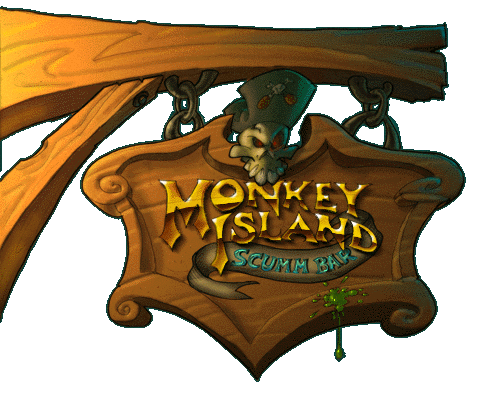Leaderboard
Popular Content
Showing content with the highest reputation on 08/20/20 in all areas
-
I think you’re right on about a PC being used to overlay the fake UI. My guess is that they were done on whatever PC (or Mac, either way a 640x480 or higher res, print design focused computer) was used to set the rest of the type on the box, digitally, and inserted over the image. I don’t know why my gut says that the screenshots were printed optically (eg to slide) and then placed on the separation plates by hand at the prepress shop but that’s what it looks like to me. They have a strange glow to them that looks too crisp for being photographed off a monitor, but aren’t so crisp that they look perfectly digital. So they could be from a slide scanner - in the early 90s it was still common for entertainment companies to archive and release their marketing assets on sides, as they could be easily mailed to magazines and TV networks in a way that could reproduce very high resolution while also being durable to mail undamaged. (It was also how our junior high yearbook was built a couple years after this - we laid out all the type and background elements in pagemaker but left boxes with X’s through them where the prepress crew at the printer would properly scan, screen, and place our photos. So maybe I’m just seeing that process here because it’s one I know 🤷♂️) Happy to be wrong about any of this, btw. I think old print design is interesting, especially in this time when digital and analog pipelines were being mixed together out of necessity, and love trying to pick apart how people made things in this unique time.2 points
-
I don't have a scanner, but have connections to some who do. I'm glad there is a demand for that box, so I'll scan them eventually and post 'em here.2 points
-
Same. I was too young to work with any of this stuff when any optical process was involved, but caught the very tail end of it. So there were little relics of optical prepress around but mostly we just scanned it in. At the newspapers I worked on in the early-mid 00s, the "this used to be done very differently" showed up for just the last step: the people who operated the printing press still would refuse to accept a PDF, and instead required that all pages be delivered as full size printouts that were run through a waxer and pasted up on a gridded sheet, that they'd stand on an easel in their studio and shoot a plate of. It was really fun to have that one little "relic of the past" to some degree, but I was also very excited when they finally moved off requiring pasteup and just took a PDF via FTP. The mid 90s are probably my favorite era of tech for this reason - the mixed media stuff. Print design was a weird hybrid of digital and optical, and games were also in a huge transitionary period, moving from the pure pixel art of the 70s and 80s into something else, but not yet fully transitioned to high res or graphics card-driven imagery. So you get things like Monkey Island 2 up through Full Throttle, which are still honed at the pixel level in Deluxe Paint by people who are masters of the 320x200 canvas, but they're incorporating more and more techniques from anywhere they can find into their work. Starting with the hand painted backgrounds in MI2, up through the use of 3D combined with very traditional pencil-drawn full screen keyframe animation (which was converted into pixel art in dpaint when inked and colored!) sometimes used for sprites and sometimes used for FMV sequences and sometimes used for a hybrid of them. It's such a weird and cool era in both print and digital design.1 point
-
I know you already had a bunch of mine, but I'm happy to scan anything you might be interested in (as long as I have it! I don't have many foreign releases).1 point
-
1 point
-
1 point
-
Wow it's been a long time since I posted on the forums, since then, well I guess the most notable thing is that I've taken over the reigns of Adventure Gamers from Marek about 5+ years ago.. Redesigning it entirely and even having Bill draw a new logo! Amazing as always (his drawing, not my design skills).1 point
-
A pretty bad quality picture (currently on holiday, not able to make a proper one) but all the usual suspects are there. Love the almost perfect quality The Dig box and the Full Throttle one (that was signed by Bill Tiller, which makes it even funnier.. the person that arranged that for me thought he worked on it ;-)) I do have a few additional boxes that aren't on this, like CMI/EMI and the Dott Triangular box, Maniac Mansion Famicom and such that I got many many years back when I really actively collected them. I'll make a proper picture of adventure games once I'm back home.1 point
-
Everything in this thread is awesome! @Jake, @Marius and @Dmnkly, your streams were so much fun and it was awesome to watch, get insight, and hang out in the chat (please do COMI and beyond!). @Blondebeard, I'm very happy to see your site back up, I used to visit it a lot back in the day. Great job on the relauch. @Laserschwert, your work continues to amaze, and if I had a multi-monitor setup then I'd be using that COMI background immediately. @Nano, thank you writing your book (I wish I could understand French) and getting Steve to paint an amazing new Monkey Island piece that now adorns my wall. As for my own stuff, here's a Sam & Max fansite! I launched it 10 years ago, but I spent a long time rebuilding the site from the ground up over the last year+, including rewriting all the content, and I'm very pleased with how it turned out. It even has an already-inactive forum! 😉1 point
-
I’ve written a few posts in here saying the theory is bullshit - because it is - but deleted them because just saying that alone didn’t seem like it would be enough. I thought just saying “this is BS” would be less helpful than what I ultimately did say. But apparently I was wrong, as you only quoted the last sentence of my reply to try and throw it back at me, but didn’t engage with any of the substance of the post. Multiple people have already said in this thread what I would have said myself: Game development (and making commercial entertainment in general) is a messy process. I’ve never been on a project that was guided precisely by some master hand, aiming to reach a long agreed on goal. That’s just not how it has ever worked. As you make something, the act of making changes it. Your goals change. You learn and refine what the strengths of tour project are as you make it. Anyone who chases the same perfect goal from beginning to end without adjusting as they go will make a bad game, film, whatever. This applies at the studio level too: Different teams are not ideological entities but are closer to porous buckets in the loose shape of the games they are working on, with different team members pouring from one bucket to another as the different games need different resources over the course of their development. If there is a master hand at work here it is only management trying their damndest to keep things held together enough to ship, to make sure games have enough people on them at the right time to literally be content complete, get QA, etc. The idea that there is some big philosophy from the top down is almost impossible to imagine, since all the work that actually goes into what makes the games what they are happens bottom up, from the hands and minds of the people making the games. Marketing and PR messaging sent out to the fans and investors tries it’s best to tell the story of designers’ visions and to map the games along some meaningful trajectory or company goal, but that is the work that is truly reactionary - responding to the games the teams are creating (through some combination of initial goals, re-assessed goals, technical and financial limitations and of course the makeup of the people on the team itself) and trying to craft a message of meaning and intent behind it. That my posting in here to tell you you’re wrong somehow “confirms” anything to you other than you being wrong, should be evidence enough to people reading this thread that it is in fact a conspiracy theory.1 point
-
AT it’s just as likely that you are making up a read behind those photos as the author of that Twitter account is. Like in the Outlaws thread you basically made up that the document was for two separate games (I guess citing Last Crusade as precedence, despite the action game not being an in house project in that case), and then continued to pile evidence on top of that as if it was true, and repeatedly challenged people who might claim otherwise - with no additional evidence other than how well it fits into your theory, which is not actually evidence. You cannot both invent the foundation yourself, and refute other people citing flaws in the foundation, without additional hard evidence that strengthens that foundation itself. (How well it enhances other ideas further downstream from that foundation is not further evidence of the validity of that foundation, that’s not how it works.) Your pattern seems to be: Create a hypothesis/foundation and then declare “if that is true, it gives new meaning to all these other things,” which is often very interesting and lets us see previously unrelated things in a new and possibly-interconnected light, but if your foundation is also your hypothesis you absolutely have to be more graciously accepting of challenges to the hypothesis. Indy could just as easily be questioning the snake might be real, and given his pattern of fearing snakes it’s more likely what is happening than his entire character being misrepresented by him being “revenant” to a snake. But that would disrupt your own ideas downstream of that hypothesis so you give it no credence, despite like you it being posted by a fan. Your arguments will forever be weak if you take this defensive approach. It seems like you are more interested in building up your own theories than pursuing the truth.1 point












